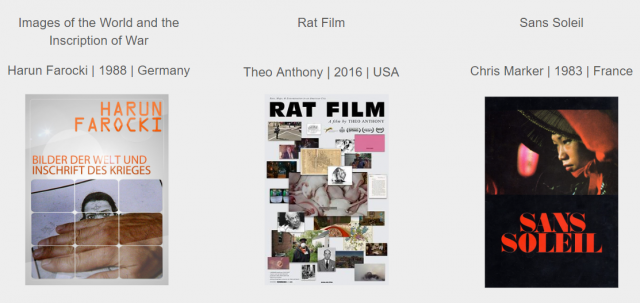This project stemmed from my continual interest in a common artistic choice of some of my favorite directors, who happen to be male: they chose to use a female voice to narrate their essay films. I’m curious about that choice, especially in the context of the essay film being a highly reflexive medium.
I focused on three films by three directors, which I choose because they are among my favorites:

I was loosely inspired by Omer Fast’s “CNN Concatenated” and used Sam Lavigne’s Videogrep – a python-based tool that allows to automatically create supercuts, based on associated subtitles files. I also used the transcript software Descript to make sure Videogrep doesn’t miss any excerpts since I knew the amateurish subtitles files I’m using might include some glitches.
My rule was to only use supercuts of words that appeared in all three films (not including conjunctions). As a result, I had to let go of several words and supercuts I desperately wanted to use, since they only appeared in one or two of the films.
I edited out clips where Videogrep mistakenly included words that sound similar to those I searched for (although I left the mistakes in if the words were of the same root).
Here are the results arranged by four chosen words from all three films into one sequence:
Here are the results arranged separately for each film:
I see those as primal experimentations, both in terms of the technical framework and the thematic inquiry involved.
List of the (62) words I searched:
mirror, represent, object, subject, visible, she, light, her, his, real, see, transparent, picture, quote, true, film, essay, layer, through, image, voice, story, fantasy, women, woman, history, cut, fake, montage, silence, hide, site, perhaps, me, over, most, hidden, hear, vision, mask, direct, name, divided, body, reflexive, human, reflection, capture, female, male, ones, manipulation, lose, lost, director, direct, memory, window, camera, observe, afraid, disguise.
